Michael Steinman is a videographer and writer whose JAZZ LIVES blog attracts avid readers from around the globe.
Hal Smith: For those who have been wandering in the jazz desert, and who may not be familiar with JAZZ LIVES, what is the significance of the record label in the cover photo of your blog?
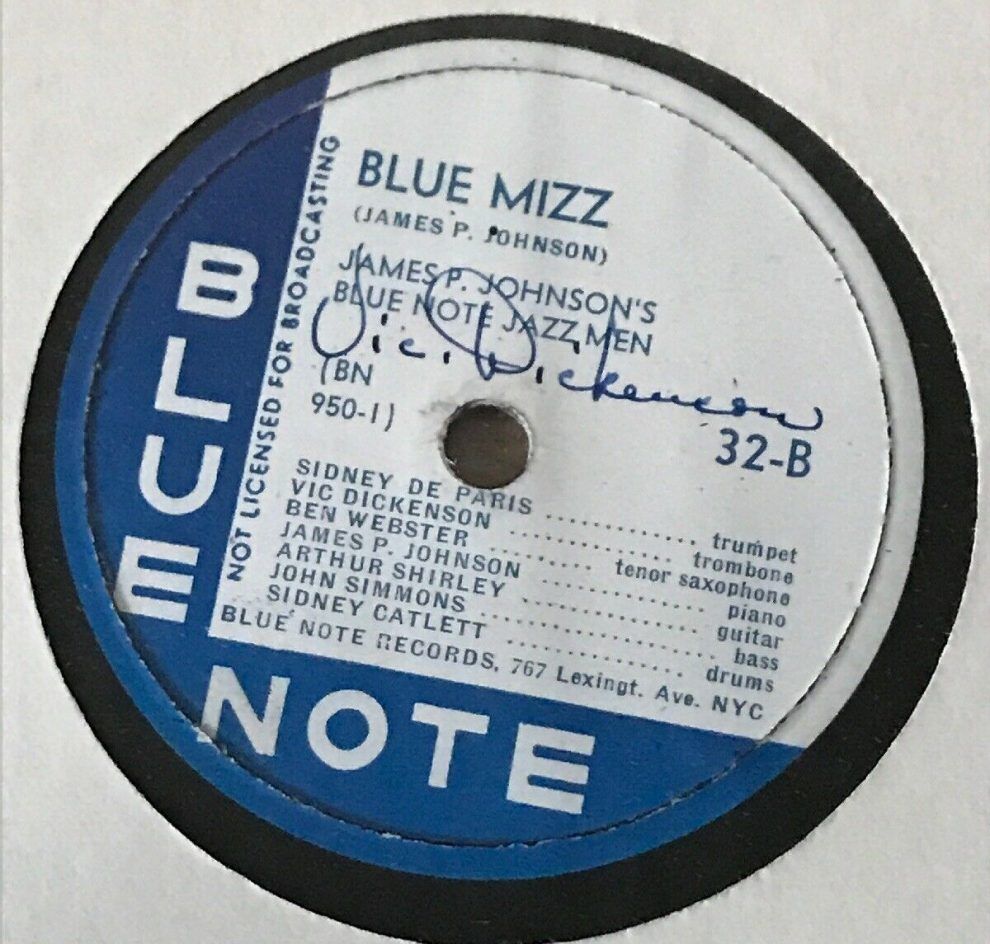 Michael Steinman: Having a 78 rpm record as the cover image might seem consciously archaic—even though I feature as much contemporary hot music as I can on the blog—but during the pandemic I have gone back into the rabbit-hole of 78-collecting, inspired by Matthew “Fat Cat” Rivera and the Hot Club of New York, so my apartment is now furnished in maroon Commodore.
Michael Steinman: Having a 78 rpm record as the cover image might seem consciously archaic—even though I feature as much contemporary hot music as I can on the blog—but during the pandemic I have gone back into the rabbit-hole of 78-collecting, inspired by Matthew “Fat Cat” Rivera and the Hot Club of New York, so my apartment is now furnished in maroon Commodore.
That record is soulful: it has a wonderful dark ensemble sound, and it’s full of heroes of mine, only one of whom I got to see and speak to: the singular Vic Dickenson, who had a beautiful signature that never varied. It’s also not the usual cherished 78, so I have the hope that someone who doesn’t know it might search it out.
What appeals to you the most about Vic Dickenson’s trombone playing?
I first heard Vic before I’d reached puberty—his remarkable vocalized interludes on Louis’ 1946 “Sugar.” It was witty yet deep; we feel as if he has secrets he’s sharing only with us. Even when he was marooned in a band going through its paces, he always had a tale to tell.
The drummer on the Blue Note session seen in your cover photo was pretty remarkable, too. You have written about him more than once, and I think the readers of TST would like to know your thoughts regarding his talent on the drums.
Sixteen bars of Sidney Catlett in any context will tell your ears more than my words could: every brush-stroke or accent makes sense. But he’s an icon to me: he made everyone else sound better; he was both passionate and expert; he lived fully and died young, right after telling a joke. Like many of my other jazz deities, he created music that reminds us that being alive is delicious.
Who are some of the other musicians who piqued your interest when you started listening to jazz?
Louis first and foremost. Bobby Hackett with or without strings, Condon, Teagarden, Pee Wee, the Goodman trio and quartet . . . a little later, Bix, Nichols, Basie on Decca, Billie and Mildred in the Thirties, Lee Wiley. I couldn’t understand Charlie Parker: that would take a few years. I had the advantage of growing up with very fine jazz radio programs (especially the late Ed Beach and John S. Wilson) by the time I was in high school.
Is there a certain kind of approach to an instrument, or the individual’s sound, that is especially attractive to you?
When I was younger, I was so entranced by certain individual approaches: Louis on trumpet; Jo Jones on drums; Fats on piano, that other players seemed foreign to me. I think I am most moved by instrumentalists who have singularly vocal sounds (Cootie Williams, Ben Webster, Bennie Morton) and an immediate swing. As I have listened more, my appreciation has broadened, so I can hear Cassino Simpson, Pete Johnson, Thelonious Monk, and Jimmie Rowles with pleasure. But we never forget our first loves: Louis with Gordon Jenkins still makes me cry; the Basie rhythm section makes me grin, as does James P. Johnson playing “If Dreams Come True.”
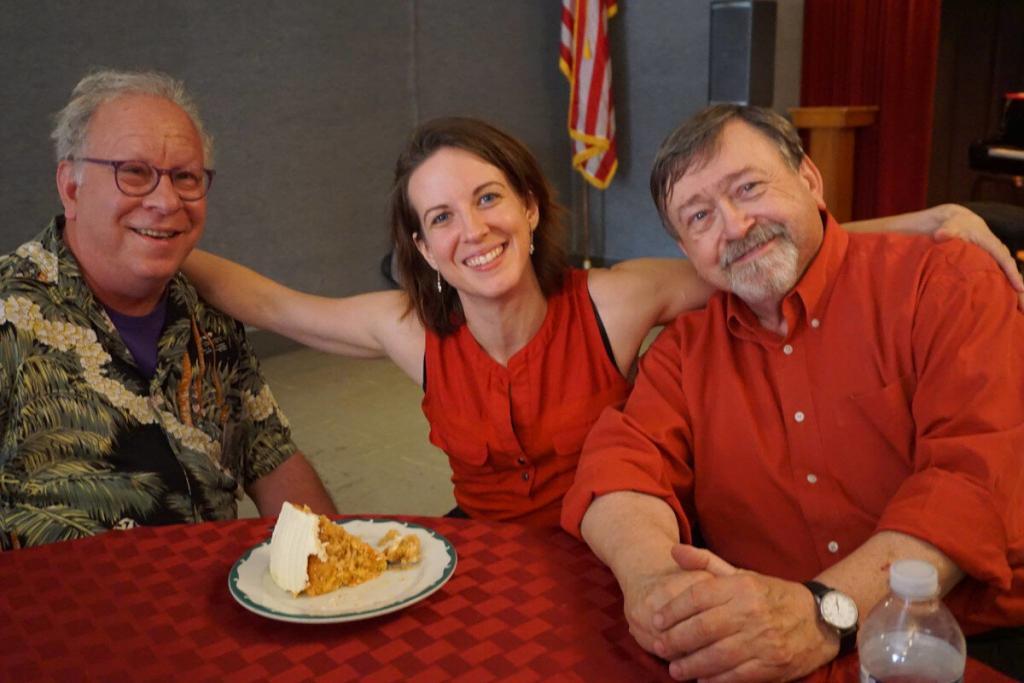
You mentioned “vocal sounds” on instruments as something you like to hear. What are the qualities you appreciate in a vocalist, whether female or male?
When you start, as I did, with Louis, feeling, naturalness, and swing are more important than a trained voice. The greatest singers understand the lyrics and send the message to us, balancing passion and ease.
Besides Louis, Billie Holiday, Mildred Bailey and Lee Wiley, who are some of your favorite vocalists from the past—including musicians who also sing?
Red Allen, Leo Watson, Jimmy Rushing, Big Joe Turner, Red McKenzie, Jack Teagarden, Hot Lips Page, Ray Nance, Fats . . . . Bessie, Connee, Marion Harris, Ida Cox, Ivie, Helen Ward, Maxine, Eva Taylor . . . and I am sure there are more.
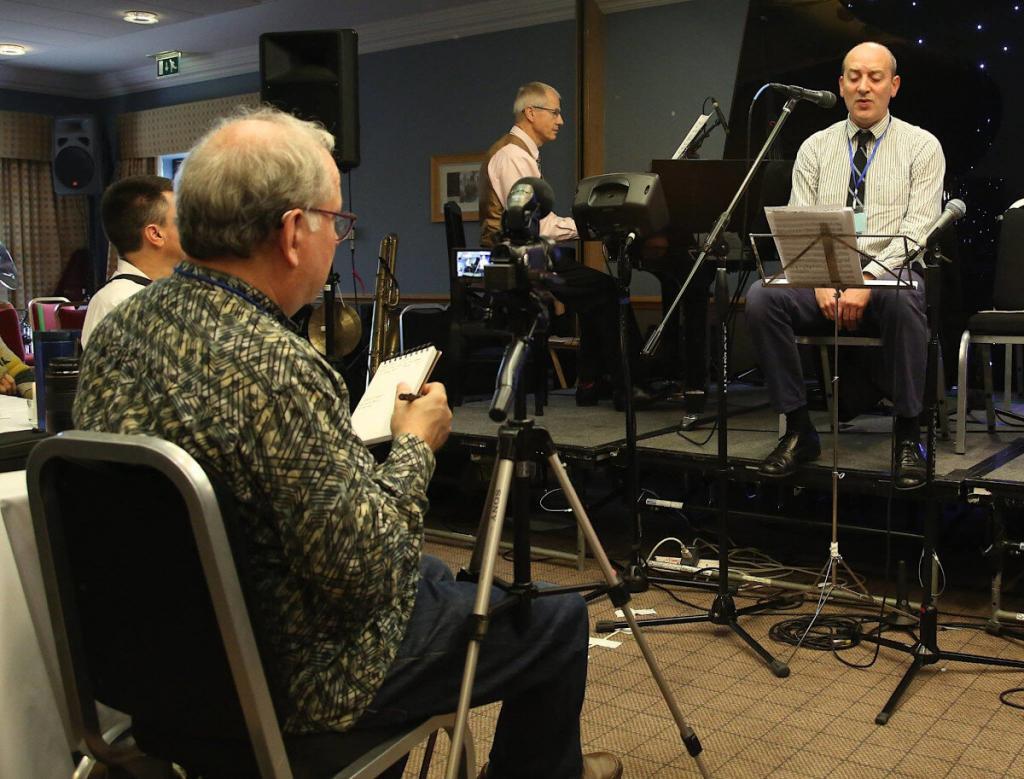
I also cherish those singers who sing only once or twice on record: Condon, Tatum, Basie, Catlett, Bill Coleman, Lester Young, Hawkins. (Doesn’t our man Alexander Hill sing on “Song of the Plow?” Got to get him in this piece . . . )
Your writing reflects a tremendous admiration for the people who play and sing jazz, and you also have the gift for describing great performance—whether live or on record. Before you started writing about the music, did you try playing an instrument or singing to express your love of jazz?
It’s really hard even to turn in a sub-standard performance, so I deplore the snide comments made by people who couldn’t even play a kazoo with skill. I spent five years strapped into an accordion; I tried to play trumpet in elementary school and have flirted with it and the clarinet in recent years, but all I can say is that I own those instruments. I have been known to sing in the car.
Since you decided not to carry on the musical legacy of Buster Moten, when did you switch to a typewriter as your main instrument?
The world is better off for that career choice. My hometown library had a good selection of jazz books, which I read and reread—discovering Whitney Balliett in adolescence and immediately being struck by his insights and his poetic style. He was a serious influence, and I am delighted to say that I met him twice and we corresponded and I sent him tapes of Big Sid. He said very kind things about some liner notes I’d written, and he knew how much I admired him.
I come from a family where education was prized, so I took pleasure in writing early on, and had a career in academia (I think I was “in school” from 1956 to 2018, which is too long) but I started writing about jazz for publication around 1990, for the IAJRC Journal, then for The Mississippi Rag, Coda, Cadence, and other periodicals, including this one.
When did you launch the JAZZ LIVES blog?
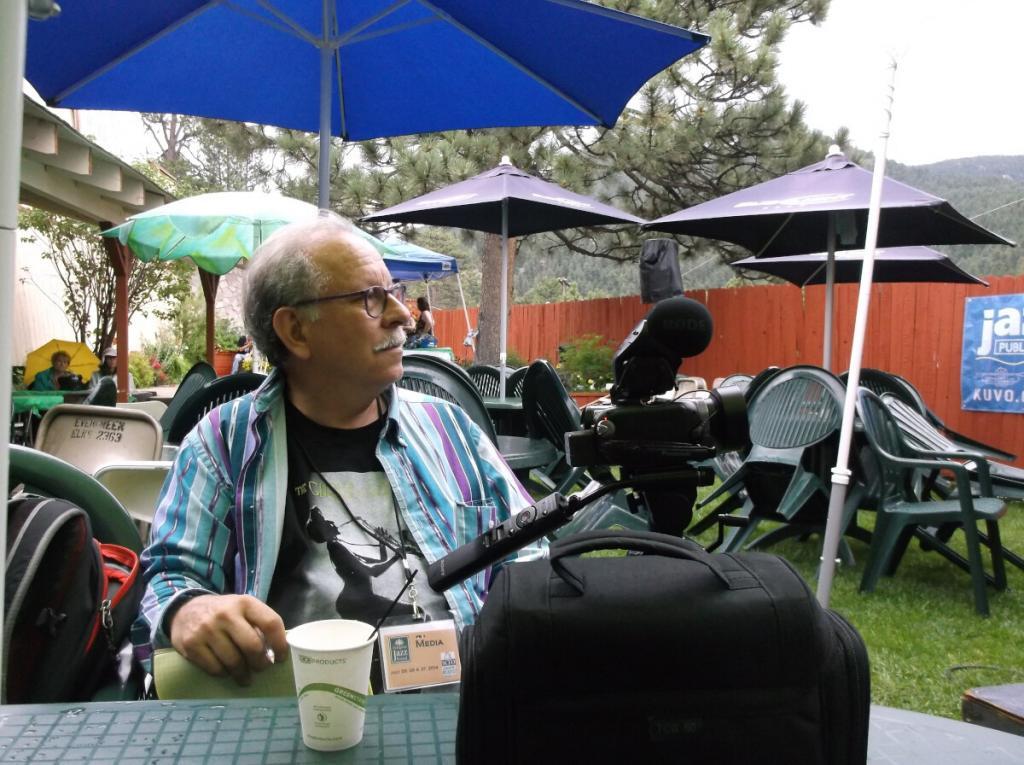
I started in February 2008, and the best part is that it wasn’t my idea at all. My then-partner heard me complaining about my listless students, and she said, “Why don’t you start a jazz blog? You have a lot to share and at least there, people will listen to you.” I grumbled, “I don’t want to write for free,” but she was persistent. “If you don’t like it, you can give it up,” and here I am, obviously showing my addictive personality, posting daily.
Well, there are LOTS of jazz fans and musicians who are thankful for that “addictive personality” and the music and commentary in those posts! Before the pandemic hit, you had amassed quite a collection of live performance videos shot at jazz festivals, clubs and concerts…
The last time I had the privilege of seeing and recording live jazz was in New York City on March 12, 2020. I have been doing my own version of loving hot archaeology since then—first checking with the musicians to get their approval to post these videos. I have an archive of over 7,000 videos shot since 2006.
Besides the videos and your comments on Classic jazz and swing recordings of the past, you have also conducted some outstanding interviews. For those who have not yet plumbed the JAZZ LIVES archives, can you mention some of the people you have interviewed?
Many musicians are happier playing than speaking into my camera, but I have interviewed Kati Powell (Mel’s daughter), Kim Cusack, Howard Kadison (Donald Lambert’s drummer of choice), Joe Muranyi, Roswell Rudd, and Ephie Resnick. Clint Baker did a series of videos explaining and playing the “New York” trombone style, and I’m particularly proud of a series of video conversations with Dan Morgenstern that we began in March 2017.
The tagline on your blog is “May your happiness increase.” Was that sentiment influenced by any particular musician?
It’s a kind of blessing I heard in California and promptly took it for my own. I would like people to be happier, having encountered what I do, then they would have been without it. And it leads me back to my greatest inspiration, Louis Armstrong, whom I refer to often on and off the blog. He increased happiness by just getting off the bus or smiling at a child; he was a shining example of what Yeats called “Unity of Being”: he was what he did, with no dividing lines; his job was his life-path, and he said he was here “in the cause of happiness.” Not the worst role-model!
The blog increases my happiness every day: I feel so fortunate to be able to do it. It has never been a money-making proposition, but joy is better than money in the long run.
You have also given away some “collectors’ item” buttons with images of great jazz musicians—such as the button with a photo of Louis Armstrong and Fats Waller together. That one is imprinted with an upbeat slogan: “Choose Joy.” Can you recommend some especially joyous recordings by Louis, Fats (or others) which might help to lift the spirits of Syncopated Times readers who are riding out the pandemic?
Some calming music might be the best prescription: Louis’s “That’s For Me,” “It’s All In The Game,” “Song Of The Islands”; Fats’ “Fair And Square,” “I’m Growing Fonder Of You”; Vic Dickenson’s “When You and I Were Young, Maggie”; Ellington’s Isn’t Love The Strangest Thing,” “Live And Love Tonight“; Basie’s “Pound Cake,” “Easy Does It.” I’ve aimed for sweet and mellow, because when the world is making your skull feel like a tom-tom, the last thing you want is loud and fast. But for sheer exuberance, if that’s your thing, the Rhythmakers, any Condon Impromptu Ensemble, Red Allen’s “Roll Along, Prairie Moon.” I’ve also not included performances by living musicians, for fear of hurting someone’s feelings by an unintentional omission: spend five minutes on JAZZ LIVES and meet my contemporary heroes.
Speaking of contemporary heroes…a few paragraphs ago, we mentioned the fact that you have numerous videos of live performances which you have filmed. What inspired you to start recording those videos for JAZZ LIVES?
You see you’ve opened Pandora’s whatever . . . thanks!
My father enjoyed creating home movies and tape recordings, so I grew up among cameras, reel-to-reel and cassette tapes. When I went to my first jazz concert in 1970 it pained me that I couldn’t take the music home with me, so I began life as a jazz criminal, smuggling a cassette recorder into concert halls and clubs: I still remember Dicky Wells shaking his head vigorously “No no no!” at me when he saw the microphone, and Wild Bill Davison stating that I would have to buy him a Scotch for every set I recorded. Ruby Braff called me “Tapes,” and erased the ones I’d sent him to record Fats over his own performance.
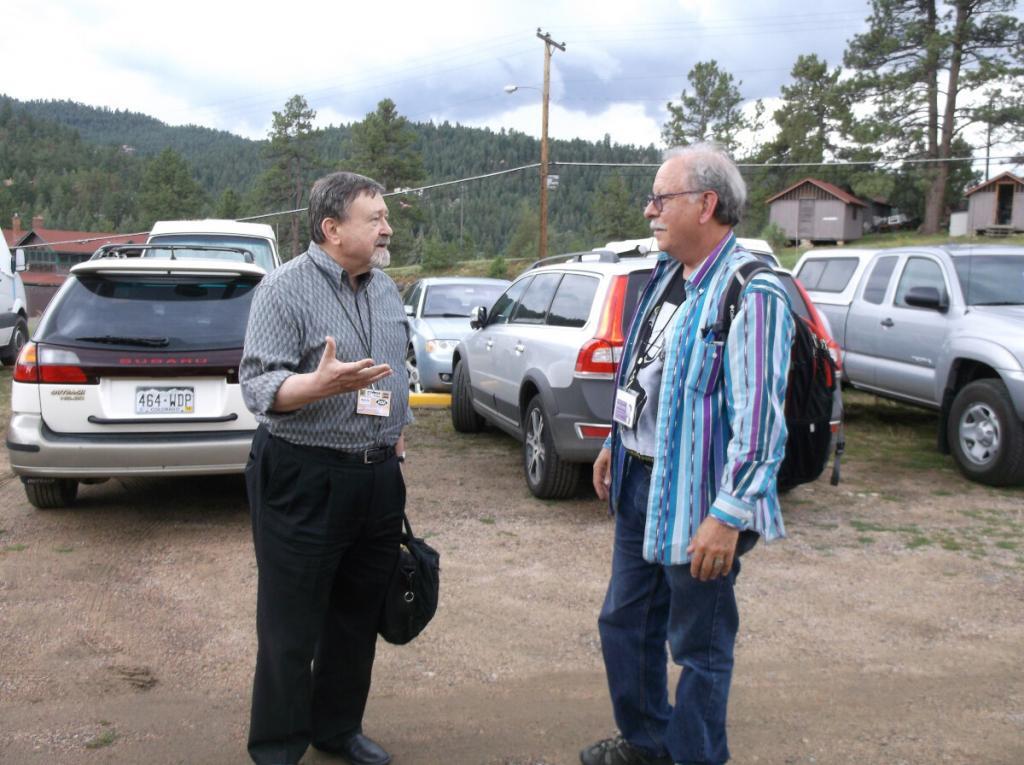
Thirty-five years later, every grandparent had a video camera. I thought, “I could do this,” (that is, buy a camera, not become a grandparent) and—neck-deep in cameras, batteries, tripods, and notebooks—I have. But I follow my own stringent rules: I ask the musicians’ permission beforehand, and show them the videos for their approval before making them public, in this way hoping to keep friendships and to distinguish myself from tourists with iPhones aloft. The video-recordings I have made might be my legacy, and I am very proud of capturing Joe Wilder, Jim Dapogny, Connie Jones, Chuck Wilson, and other heroes, making them both tangible and immortal.
I know that the people who follow your blog enjoy the wonderful videos you have shared, not to mention your writing—which celebrates the great traditions of Otis Ferguson and Whitney Balliett. However, if our readers are not familiar with JAZZ LIVES, they should please visit jazzlives.wordpress.com. Thank you, Michael, for participating in this interview and may your happiness increase!
Joe Bebco is the Associate Editor of The Syncopated Times and Webmaster of SyncopatedTimes.com






















